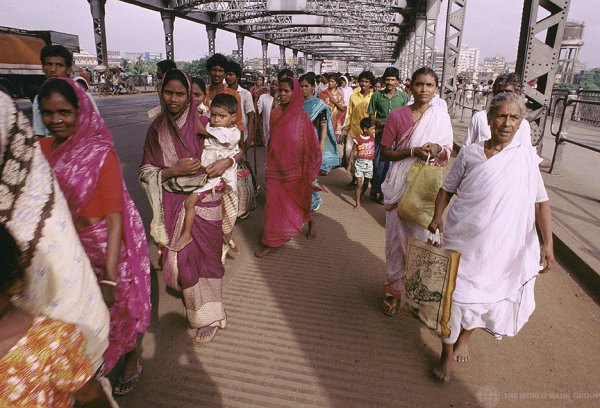Geospatial modelling study highlights Indian regions with treatment-resistant malaria parasites
An updated systematic search and review of published information from over 4,000 malaria samples has identified areas in central, eastern and north-eastern India where treatment-resistant malaria parasites could be more prevalent.

The study, published in the American Journal of Tropical Medicine and Hygiene, was a collaboration between researchers at the Indian Council of Medical Research (ICMR)-National Institute of Malaria Research (NIMR) and the Infectious Diseases Data Observatory (IDDO), as well as with colleagues in Australia (University of Melbourne) and the USA (Johnson C. Smith University).
The research team reviewed seven databases to compile resistance marker data from studies in India, then carried out geospatial modelling for three specific malaria parasite genotypes that are markers for treatment resistance.
“Our work identified several areas in central, eastern and north-eastern India where the prevalence of malaria parasites with genetic markers for sulfadoxine-pyrimethamine resistance is predicted to be greater than 15%,” said ICMR-NIMR’s Dr Minu Nain, joint first author of the study.
The research team also mapped areas where molecular markers for artemisinin resistance were also likely to be present.
“Antimalarial drug treatments such as artesunate, sulfadoxine and pyrimethamine may be more likely to lose their efficacy in these areas, but these predictions need to be confirmed,” added ICMR-NIMR’s Dr Praveen Bharti, one of the lead study investigators.
India currently has 79% of malaria cases and 83% of total malaria deaths within the WHO South East Asia Region, but as part of WHO malaria elimination programme, the country has set an aim to become malaria free by 2030.
“We think that active surveillance, including tracking drug resistance, are likely to be crucial in reaching the goal of malaria elimination in India,” said Dr Amit Sharma from the International Centre for Genetic Engineering and Biotechnology, the study’s corresponding author.
“There were large disparities in the amount of surveillance data collected across malaria-endemic regions of India. It would be important for future surveys to include areas where malaria prevalence is lower – malaria infections in these areas are more likely to cause a clinical episode, because of lower immunity. This in turn is likely to increase the selective pressure on the parasites and hence the likelihood of emergence of drug resistance in these regions,” he added.
The study found that neighbouring South East Asian countries have almost double the number of malaria surveillance studies, despite India having one of the biggest malaria burdens in the region.
The mathematical model used by the researchers could make predictions even for locations where no data was collected, and hence to identify areas where the prevalence of drug resistant parasites could be high.
“Iterative application of such modelling can help national malaria programmes in India and elsewhere to target future surveillance studies, potentially accelerating the detection of spreading or emerging resistance. This information can help ensure that the most effective interventions are used to treat malaria,” said Professor Philippe Guerin, one of the study’s corresponding authors and IDDO Director.
 es
es 

 English
English Français
Français Português
Português Tiếng Việt
Tiếng Việt